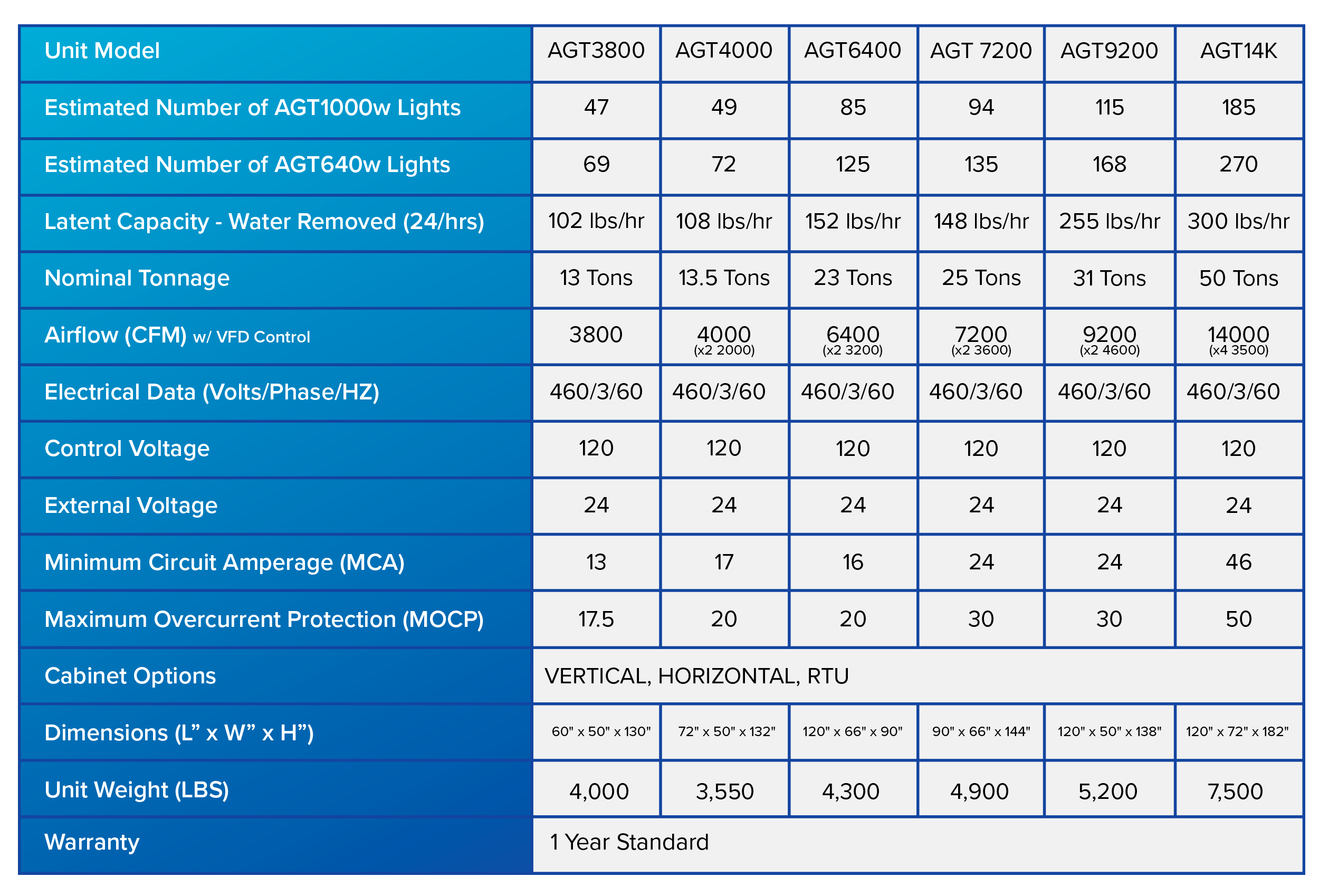-min.png)


Patented dehumidification and energy recovery module saves operators up to 60% on HVACD energy consumption (kWhr) compared to traditional dehumidification and cooling equipment.
Proprietary reheat process via recovered waste heat from LED lights.
Designed for wide range of environmental operating parameters (all load scenarios).
Consistent trending throughout grow cycle for targeted set points (VPD, RH, Temp).
Designed to be integrated with AGT1000w & AGT640w lights to repurpose light waste heat. Seamless integration and environmental control through AGT’s SAAM IoT control platform.
SAAM uses our strategic in-unit sensor placement for precision control over environmental set points.
No built-in compressor, limited transition periods between lights ON/OFF.
Proprietary Sequence of Operation and PID loops drive equipment to hold environmental set-points














Input your information below to download the specification sheet.
.png)